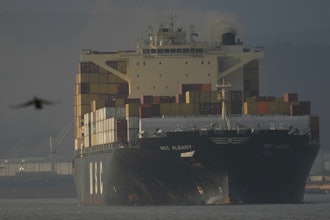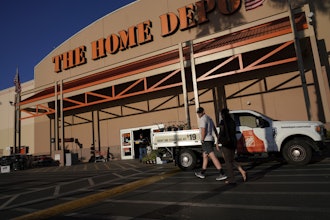If you place thirty people in a room and ask them to define “supply chain visibility,” you’re likely to receive thirty different answers. Not even the academic community has settled on a common definition. Much of the difficulty in landing on one definition stems from today’s complex supply chains, comprised of numerous activities and partners. According to APICS Supply Chain Council, a standard global definition would include a framework of multiple activities across the processes to plan, source, make, deliver, return and enable. It would also involve numerous partners including suppliers, customers, carriers, freight forwarders, contract manufacturers, and others. It’s complicated just to define, let alone to execute.
Today’s supply chains face a variety of pressures, including lower product costs, higher quality standards, more efficient global logistics, and increased international compliance risks. In addition, supply chains are layered with additional challenges when working with global suppliers, such as human rights violations, product theft, natural disasters, labor shortages, and factory strikes. For example, factory strikes in China increased by 58 percent last year. In another example, a recent report from the British Standards Institute warned that “emerging health crises, such as the Zika virus, could also pose a significant threat to the global supply chain and may lead to work stoppages and protests.” These and other issues impacting supplier activities can create greater levels of corporate risk and place more importance on effectively connecting with supplier networks.
Many companies do agree on the importance of supply chain visibility. In a 2015 report from Aberdeen Group, supply chain officers ranked communication, collaboration, and centralized data as their top concerns. Likewise, 63 percent of companies reported that they are improving their supply chain visibility. However, most of these efforts haven’t gone far enough. It’s safe to say most global supply chain visibility efforts have focused on basic inbound shipment visibility from suppliers and outbound delivery to customers. The majority of these efforts focused on tracking and tracing inventory, orders, and shipments to ensure timely deliveries and meet customer expectations.
Often overlooked by many global organizations are the benefits of greater information access and situational awareness from suppliers. By diving into a deeper level of centralized data for product design, origin, pre-production, production, and shipment preparation activities, companies can:
- Gain quicker access to supply information
- Respond faster to unexpected supplier design, quality, and production issues
- Improve supplier involvement in key decisions
- Reduce international shipment costs
- Accelerate time to market
Three capabilities are imperative to achieve these benefits:
- Connectivity via a secure data communication with suppliers, forwarders, transportation carriers, and customs brokers to share supply chain information and alerts critical for timely delivery of goods.
- Visibility into a central source of information for supply partners to fully manage and monitor product design, social compliance, quality, production, and other key activities with suppliers.
- Shipment Preparation with the ability to quickly provide routing guides, expediting recommendations, advanced shipment notice (ASN) and other shipment document creation, carrier invoice reconciliation, and other shipping processes jointly with supply trading partners.
Deploying these capabilities and increasing your focus on upstream visibility with suppliers delivers compelling supply chain benefits, as the following brief examples highlight:
- One specialty retailer reduced lead times by improving production tracking and visibility into every phase of the product development lifecycle with suppliers: design, pre-production tracking, costing, and material liability.
- An athletic brand manufacturer enhanced supplier visibility to increase fill rates by 10 percent, improve purchase order collaboration, and introduce an airfreight approval process for lowering expediting costs.
- A South American retailer improved connectivity with suppliers, resulting in reduced compliance risks, lower duty overpayments, and quicker shipment clearance times.
Keep in mind that visibility goes beyond simply providing the right supply chain information within your own organization; the ultimate goal is to develop one view of product, pre-production, and production activities for key internal and external decision makers. With this enhanced level of information sharing, you and your trading partners are in a better position to plan across joint activities and respond with agility when unexpected supply disruptions occur.
Transitioning to a modern and streamlined upstream visibility approach your suppliers allows you to better match supply and demand, centralize key supply information, and ensure one source of visibility for all partners. Companies can now accelerate time to market and boost profitability with real-time visibility solutions that are secure, scalable, and fully address communication requirements across your network of supply trading partners.
Final Thought
The demand for upstream visibility into supplier execution, and your supplier’s supplier, is mandatory to avoid disruptions and understand the true cost when tradeoffs have to be made.
Gary Barraco is director of global product marketing at Amber Road.



















